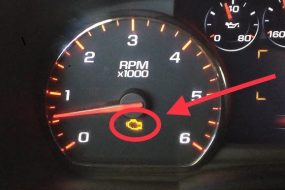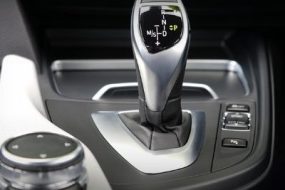
Coolant is very important to the car as water is important to the body. It is what keeps the car at its required running temperature and prevents it from overheating.
A car with an extremely low or no coolant at all will overheat, making it dangerous to drive the car. When the fluid is low, it is wise to add more. Therefore, what do you do after adding coolant?
What to Do After Adding Coolant
After Adding coolant, you should:
1. Check the Coolant Level
The first thing to do after adding coolant to the car is to verify the coolant level.
Every car has the number, amount, or quantity of fluid that should be added to it. It is not wise to add more than what is required to the car.
The reservoir tank is there to ensure you gauge the fluid to the normal level it should be. Once your radiator is full of fluid, your next gauge should be the reservoir tank.
On no account should you fill-up the reservoir to the top. If you do, it will leak out when the engine gets hot and may damage something in your engine compartment.
Check the reservoir, you will see the minimum, maximum. Top it to half so that when the car heats up and the coolant rises, it will still have enough space for it in the reservoir, or else it will leak out.
I’m saying this because I’ve had this problem before where I overfilled my coolant because I was embarking on a long journey.
It was while I was still on the way that I noticed something was wrong with my hood. I had to stop at a safe place and while I opened my hood, lo and behold, the fluid was too full on the reservoir.
So the heat and the force opened the reservoir cap, causing it to leak. I had to remove some of the coolant to solve the problem. Luckily, the cap did not fall off on the road and it did not spoil anything in my engine compartment.
If after verifying and you noticed that you may have added above the requirement. Just get a small hose and remove the fluid. Make sure it’s at the normal level. Very important.
2. Ensure the Radiator and Reservoir Cap are Covered
What’s the use of adding a coolant in your car if you cannot cover the radiator or the reservoir? The fluid will leak out as you drive and cause the car to overheat.
Because the fluid is usually hot while the car is in motion, the hotness might spoil something inside your engine compartment
Therefore, ensure to cover and tighten the radiator cap and coolant reservoir cap properly immediately after adding fluid.
3. Start the Car and Idle it for 15 Minutes
If you just did a coolant flush and added fresh coolant, you should never drive the car immediately. You are recommended to start and idle the car for about 15 minutes before driving to enable the fluid to circulate properly. If you just did a top-up, you can drive after idling the car for a while.
Also, if you did a flush, then you’re advised to turn the car off after 15 minutes, let the cool, and verify the level of the fluid. This is important to ensure you have the right amount of fluid needed in the car.
3. Monitor the Car Temperature
After you must have started the car after adding coolant, during the time the car is running idle, monitor the temperature to ensure your car is not overheating. This is important especially if you did a coolant flush.
4. Drive the Car
If after 15 minutes of idling the car, the temperature is good, then you can drive the car. While driving the car, you’re urged to monitor the temperature especially when your AC is on and when you’re in congested traffic.
Can You Drive Immediately After Adding Coolant?
No, you cannot drive immediately after adding coolant. You should turn on the car and let it run idle for a few minutes before driving to enable the fluids to circulate properly.
If you did a top-up, you can allow the car to run for a few minutes but if you did a flush and added new coolant to the car, you must let the car idle for about 15 minutes before driving the car.
When Should You Add a Coolant?
- When the Coolant Level is Low: You should add coolant when the level is low on either the radiator or reservoir tank.
- When the Old One is Contaminated: If you feel the fluid is contaminated and it’s not working as it should, you can remove the old one and add a new one.
- When You Want to Do a Coolant Flush: When it’s time to do a fluid flush, you can remove the old one, flush it properly, and add new fluid.
- When Your Car is Overheating: The number one culprit of overheating in cars is low or no coolant. So if your car is overheating, it’s a sign that you need to add more fluid to your car.
- When you’re Travelling on a Long Journey: If you’re about to drive your car to a far distance, it is wise to check your fluid level and add more if necessary.
How Long Does it Take for New Coolant to Work?
It takes a few seconds for a new coolant to work but you must let the car idle for a few minutes to enable the coolant to circulate properly.
How Do I Know if my Coolant is Working?
You should know if your coolant is working if your car which was overheating before is no longer overheating.
If after adding the coolant to the required quantity and your car is still overheating, you should take your car to the nearest auto shop and have them access the car or other problems that may have caused the overheating.
Please, on no account should you continue driving a car that is overheating to avoid destroying your head gasket cover. Driving an overheating car will cause more problems that will cause too much money to fix. Please avoid it.
Conclusion
What to do after adding coolant to your car depends on whether you did a flush and added new fluid or you just did a top-up. Whichever one you did, it is important to ensure the fluid level is right, because, putting too much fluid in your car will do you no good.
Once the car heats up, the coolant will rise and since it’s too much inside the reservoir tank, it will leak out from the hose connected to the reservoir. This should be avoided to prevent hot water from spoiling something inside your engine compartment









